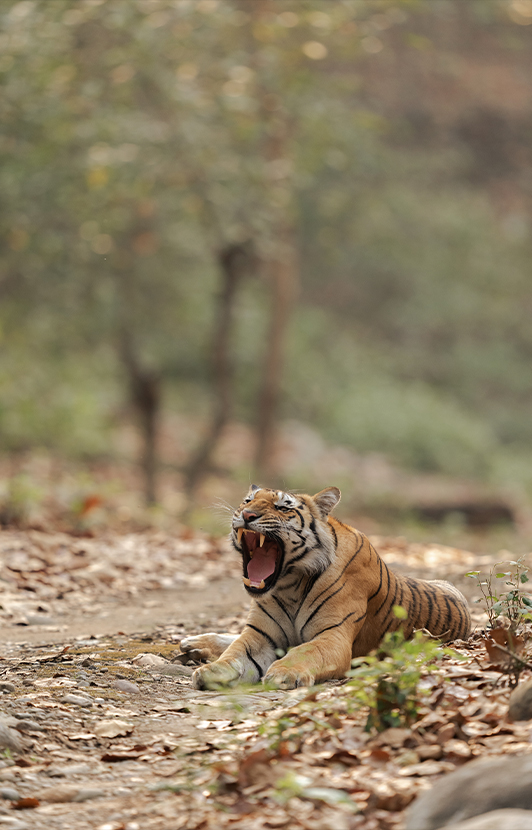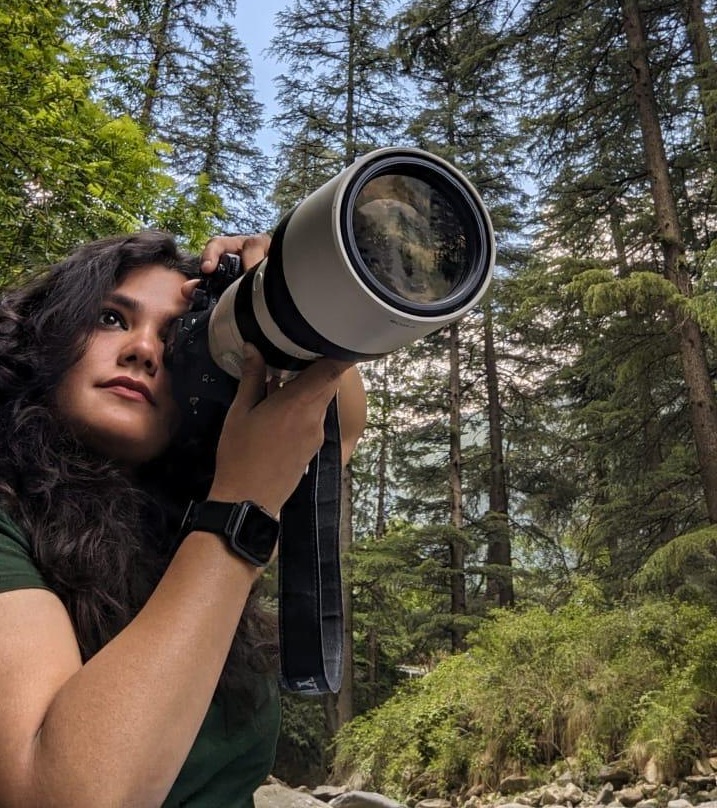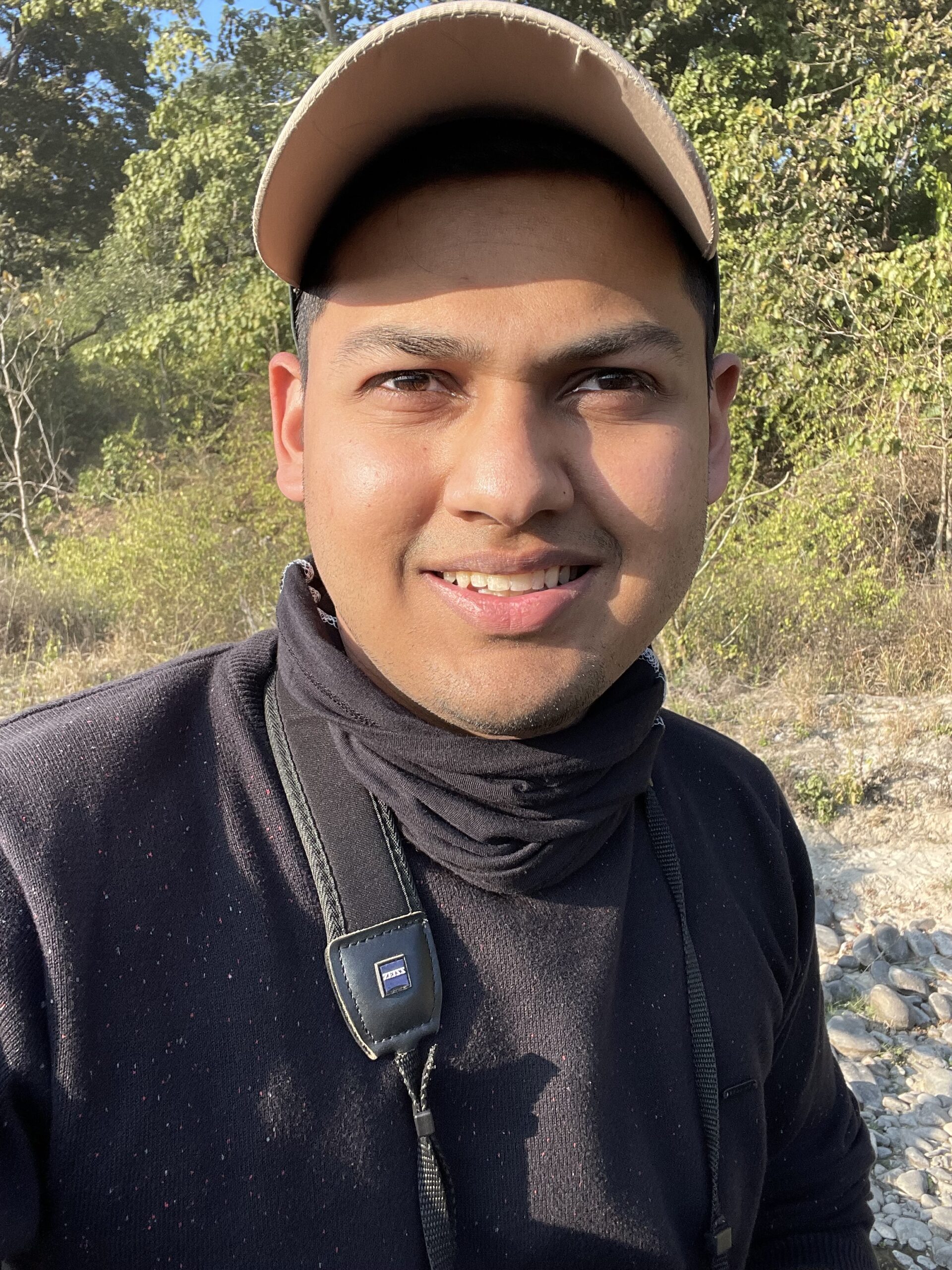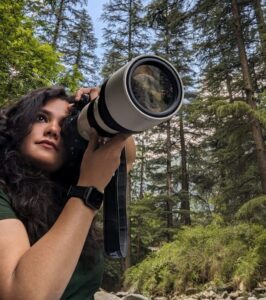Corbett Tiger Reserve
The first National park in India, where tigers, elephants, and diverse bird life roam the scenic foothills of the Himalayas.

Safari Timings
Winter (Oct–Feb)
- Morning Safari: 6:30 AM – 10:30 AM
- Evening Safari: 2:30 PM – 5:30 PM
Summer (Mar–June)
- Morning Safari: 5:45 AM – 9:15 AM
- Evening Safari: 3:00 PM – 6:30 PM
(Varies slightly with season)
Jim Corbettt
Nestled in the foothills of the Himalayas of Uttarakhand, Jim Corbett, is India’s first national park and the original home of Project Tiger. Established in 1936, the park covers over 1,300 sq. km. of dense forests, grasslands, rivers and hills. It is famous not only for its biodiversity but also the mystery and stories that resonate throughout its sal forests.
The Ramganga River that runs through the park supports its ecosystem and is one of the most scenic and biologically diverse areas in India.
Flora:
The landscape of Jim Corbett has sal forests, haldu, peepal, rohini and mango groves, and open grasslands (chaurs) to provide feeding grounds for prey species as well as providing views of predators nearby. Each zone has very different landscapes that range from riverine belts to dense forests to open plains.
Fauna:
In addition to the glorious Bengal tigers, the park also hosts Asian elephants, leopards, Himalayan black bear, otters, longurs, barking deer, and wild boar. The Dhikala zone is specifically famous for its herds of elephants and tiger sightings on the river banks.
Avifauna (Birdlife):
With about 600 bird species, Corbett is bird-Lovers paradise. Be sure to look out for crested serpent eagles, fish owls, great hornbills, pheasants, kingfishers, and migratory waterfowl. The wetlands welcome many ospreys and storks.
Dhikala Forest Rest House
The Dhikala FRH (Forest Rest House) is a prime attraction for wildlife enthusiasts and photographers. Staying inside the core zone offers:
- Early access to safaris
- Raw and uninterrupted forest sounds at night
- The chance to observe wildlife from watchtowers and nearby grasslands
Note: Accommodation must be booked well in advance through official forest department channels, as it’s highly limited and in demand.
Why Dhikala is a Photographer’s Paradise
- Vast open spaces for action shots of elephants, deer herds, and tiger chases
- Misty mornings and golden light during winter for dreamy landscapes
- Ramganga River backdrops perfect for compositions
- Rich bird diversity ideal for avian photography
Dhikala isn’t just a safari zone—it’s an experience that takes you deep into the wild, far from city life. Whether you are here to photograph the tiger, watch a herd of elephants against the backdrop of the Himalayas, or just listen to the jungle sounds at dawn, Dhikala captures the soul of Corbett like no other.
destination map
What to do
Jeep Safaris
Go on a jeep safari in the core areas of the forest such as Turia, Karmajhiri, and Jamtara, with expert naturalists, either in the morning or the evening.
In some buffer zones it is very rare to get the opportunity to go on a night safari, where you can also observe nocturnal species like civets, owls and nightjars.
Pottery and Village Walks
Explore local communities to experience how forest communities live, their traditional ways of craftsmanship as well as their connection to nature.






 Apoorva Jadon
Apoorva Jadon